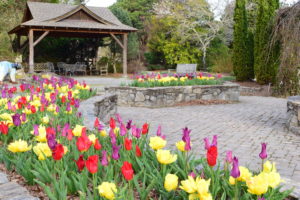Plant Bulbs for Spring Impact
go.ncsu.edu/readext?565089
en Español / em Português
El inglés es el idioma de control de esta página. En la medida en que haya algún conflicto entre la traducción al inglés y la traducción, el inglés prevalece.
Al hacer clic en el enlace de traducción se activa un servicio de traducción gratuito para convertir la página al español. Al igual que con cualquier traducción por Internet, la conversión no es sensible al contexto y puede que no traduzca el texto en su significado original. NC State Extension no garantiza la exactitud del texto traducido. Por favor, tenga en cuenta que algunas aplicaciones y/o servicios pueden no funcionar como se espera cuando se traducen.
Português
Inglês é o idioma de controle desta página. Na medida que haja algum conflito entre o texto original em Inglês e a tradução, o Inglês prevalece.
Ao clicar no link de tradução, um serviço gratuito de tradução será ativado para converter a página para o Português. Como em qualquer tradução pela internet, a conversão não é sensivel ao contexto e pode não ocorrer a tradução para o significado orginal. O serviço de Extensão da Carolina do Norte (NC State Extension) não garante a exatidão do texto traduzido. Por favor, observe que algumas funções ou serviços podem não funcionar como esperado após a tradução.
English
English is the controlling language of this page. To the extent there is any conflict between the English text and the translation, English controls.
Clicking on the translation link activates a free translation service to convert the page to Spanish. As with any Internet translation, the conversion is not context-sensitive and may not translate the text to its original meaning. NC State Extension does not guarantee the accuracy of the translated text. Please note that some applications and/or services may not function as expected when translated.
Collapse ▲It’s not too late to plant spring flowering bulbs in December, but it should be done fairly soon. They need a minimum of 12 weeks chilling period (below 40 degrees) in order to grow and flower. It’s important to plant at the correct depth, a bulb planter can be helpful, but at Bullington we tend to dig out a whole section with a shovel and pack it with bulbs. Daffodils and tulips immediately come to mind for spring bulbs. Daffodils are very reliable coming back from year to year. Tulips though are not. They are an especial treat for voles and unless they can be planted in a protected bed or container, they just don’t come back very well. Subsequently, some gardeners regard them as annuals.
There are many more varieties of spring flowering bulbs available to gardeners. Alliums bloom later than most spring bulbs, but the wait is rewarded with a display of impressively large flowers of purple balls. Fritillaria is a type of lily that is not well known and when they bloom at Bullington people constantly ask what they are. One form known as snake’s head lily has different shades of purple flowers with a checkerboard pattern. Foxtail lilies (Eremurus) make a dramatic statement in the garden with long flower spikes of yellow or orange on very tall plants. There are dwarf irises that bloom very early in the spring. Hyacinths are wonderfully fragrant flowers. Chionodoxa, are beautiful low growing flowers of blues, pinks, and whites. And they are many other types.
We still have over 1000 bulbs to plant at Bullington, so while there is still time to get them in the ground, we will try to do it before Christmas so that they will have the required chilling to make a beautiful display.






